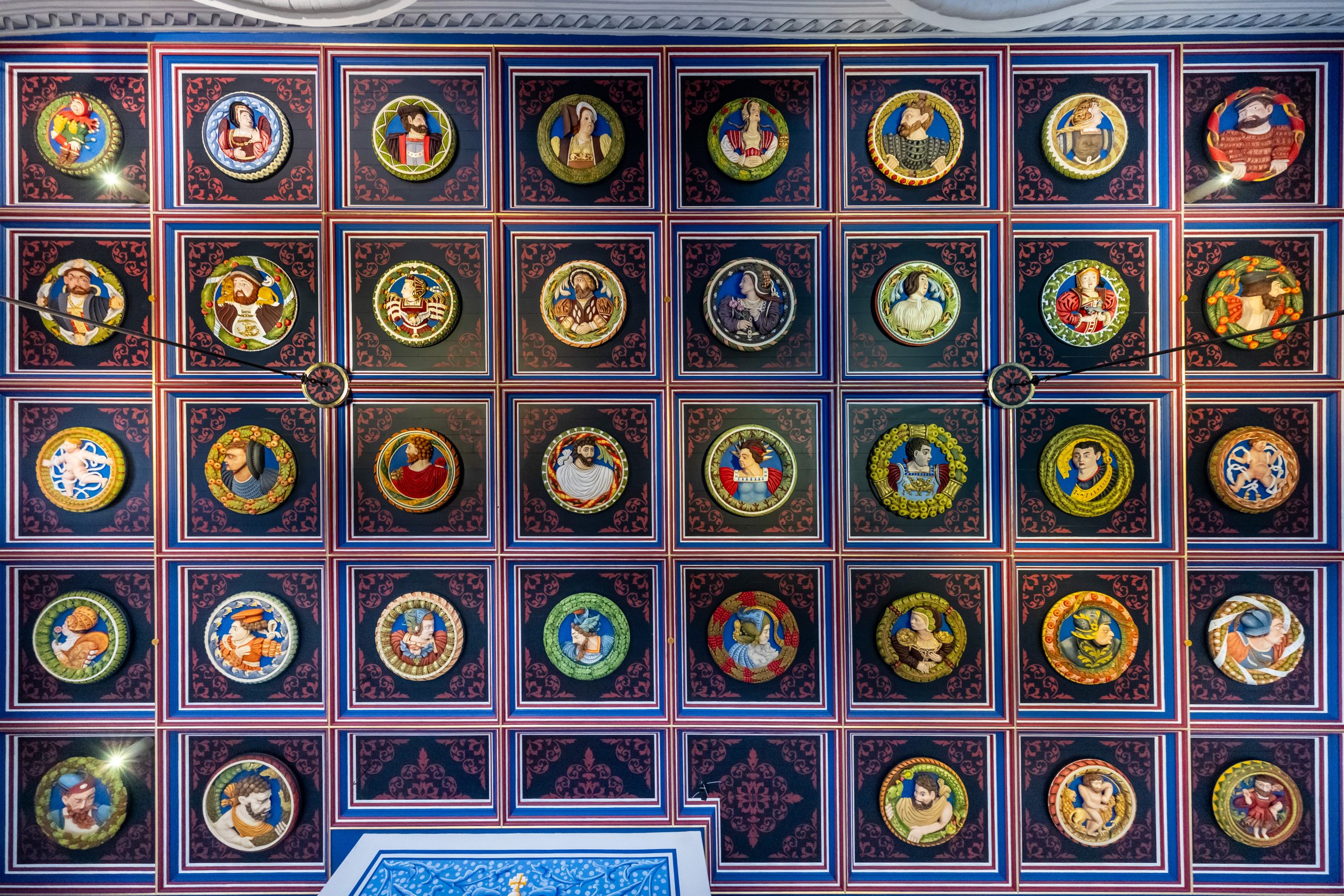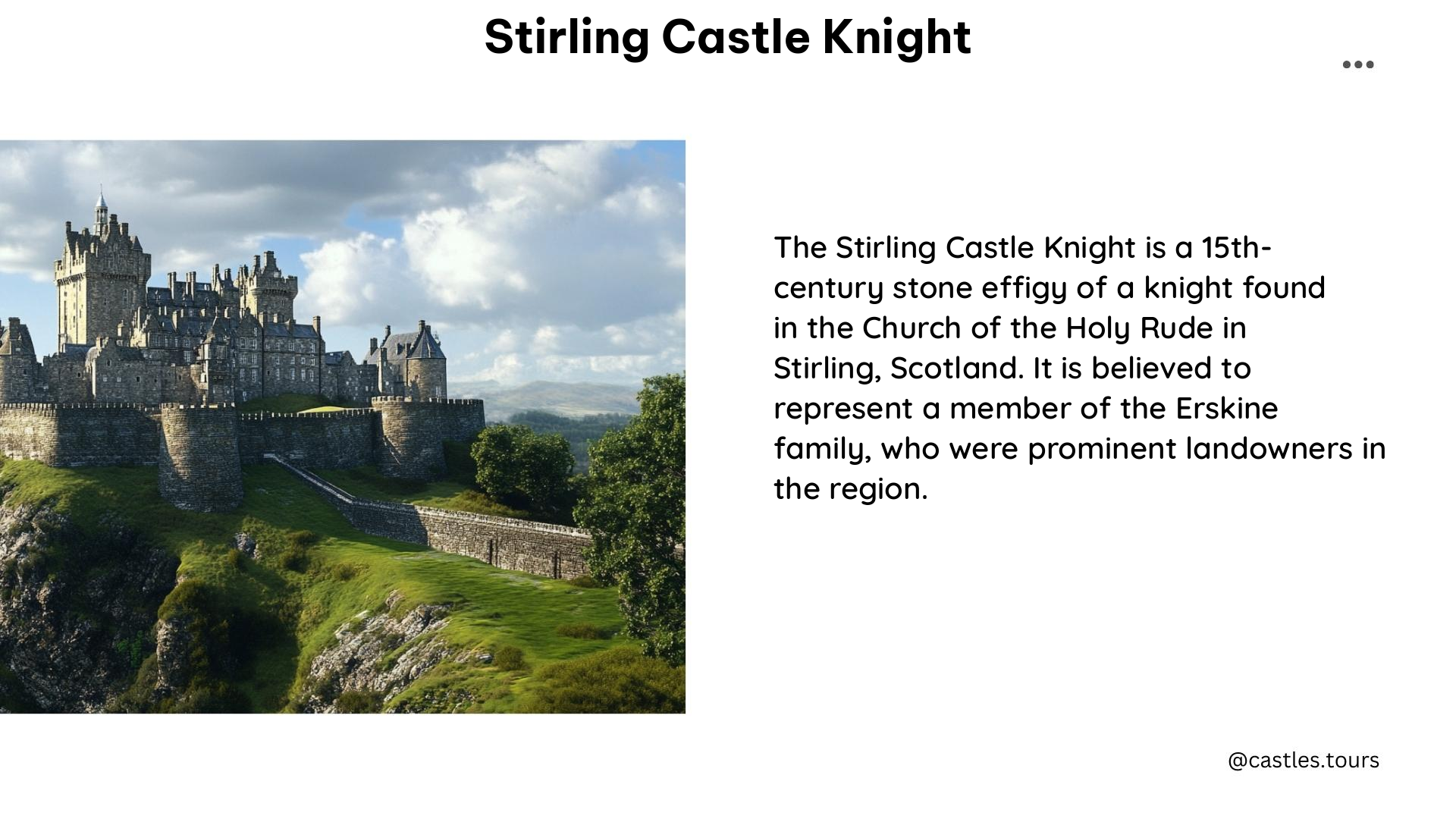The Stirling Castle Knight is a captivating historical figure whose remains were discovered during an excavation of Stirling Castle in Scotland in 1997. This medieval warrior’s story has captured the imagination of historians, archaeologists, and castle enthusiasts alike, shedding light on the rich history of this iconic Scottish fortress.
The Discovery of the Stirling Castle Knight

In 1997, during a refurbishment project at Stirling Castle, a remarkable discovery was made beneath the floor of the castle’s Renaissance royal palace. Archaeologists unearthed the well-preserved skeleton of a medieval knight, buried in a lost royal chapel that had been constructed in the early 1100s. This unexpected find sparked a flurry of investigation and research, as experts sought to uncover the identity and significance of this intriguing historical figure.
Forensic Analysis and Facial Reconstruction

The Stirling Castle Knight’s skeleton underwent extensive forensic analysis, led by Professor Sue Black and her team of experts. Through meticulous examination of the bones, they were able to determine key details about the knight’s physical characteristics and life. The team discovered that the knight was approximately 5 feet 7 inches tall, with a strong, muscular build that suggested a life of physical activity and combat.
The researchers also used advanced techniques to reconstruct the knight’s facial features, creating a striking 3D representation of his appearance. This facial reconstruction was featured on the BBC Two series “History Cold Case,” captivating audiences and providing a tangible connection to this medieval warrior.
The Significance of the Stirling Castle Knight
The Stirling Castle Knight’s burial within the lost royal chapel indicates that he was a high-ranking nobleman or knight, likely of significant importance during his lifetime. The chapel’s location, beneath the floor of the castle’s Renaissance royal palace, further suggests that the knight’s death occurred during a period of English occupation, potentially in the 14th century.
Historians have speculated that the knight may have been Sir John de Stricheley, an English nobleman who died in 1341 while the castle was under English control. However, the true identity of the Stirling Castle Knight remains a mystery, adding to the intrigue and fascination surrounding this remarkable historical figure.
The Knight’s Physical Characteristics and Origins
Analysis of the knight’s skeleton has revealed intriguing details about his physical characteristics and possible origins. The deep grooves in his shoulder bones indicate that he had developed exceptionally strong muscles, likely from a lifetime of physical activity and combat. Additionally, the minerals found in his teeth and bones suggest a diet rich in salted fish, a common staple among English troops fighting away from home.
Based on these findings, experts believe that the Stirling Castle Knight may have hailed from southern England or western France, regions that were closely connected to the English occupation of Stirling Castle during the 14th century.
The Stirling Castle Knight’s Legacy
The discovery of the Stirling Castle Knight has captivated the public imagination, sparking a renewed interest in the history and heritage of Stirling Castle. Today, visitors to the castle can see the knight’s 3D facial reconstruction on display in the Queen Anne Casemates, providing a tangible connection to this medieval warrior and the rich history of the castle.
The Stirling Castle Knight’s story serves as a powerful reminder of the enduring legacy of Scotland’s castles and the remarkable individuals who once walked their halls. Through the ongoing research and interpretation of this remarkable find, the knight’s legacy continues to inspire and fascinate castle enthusiasts and historians alike.
